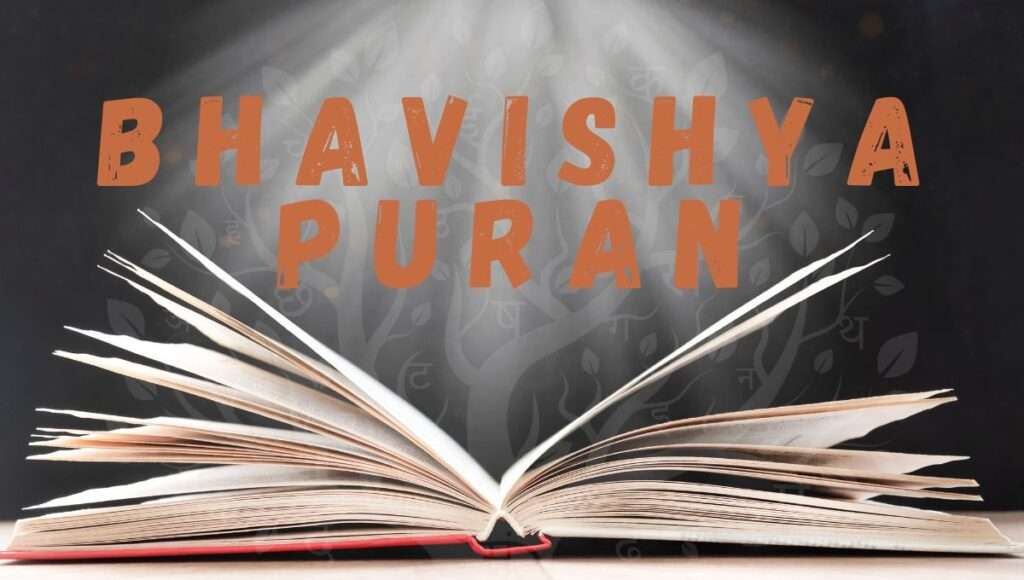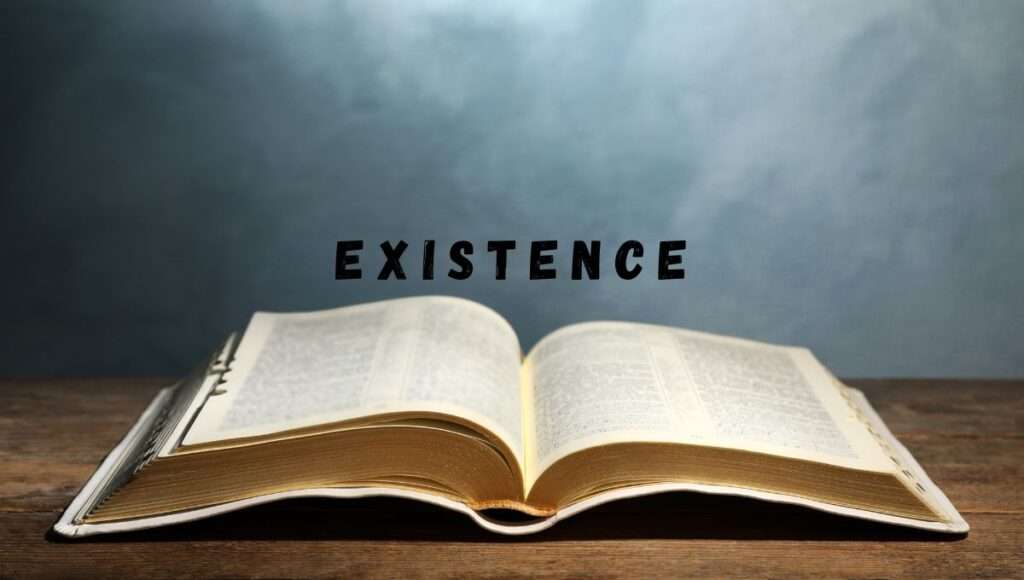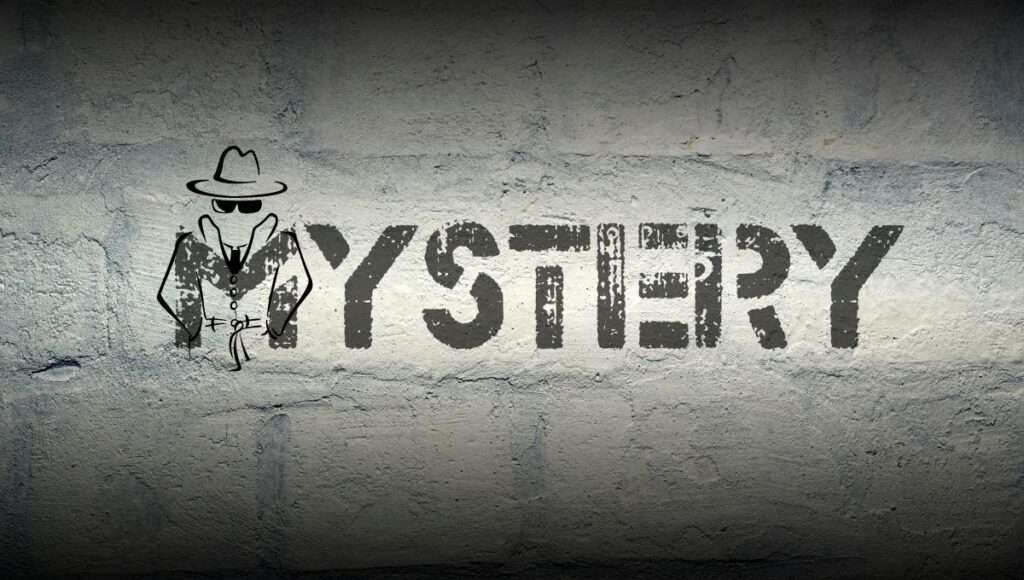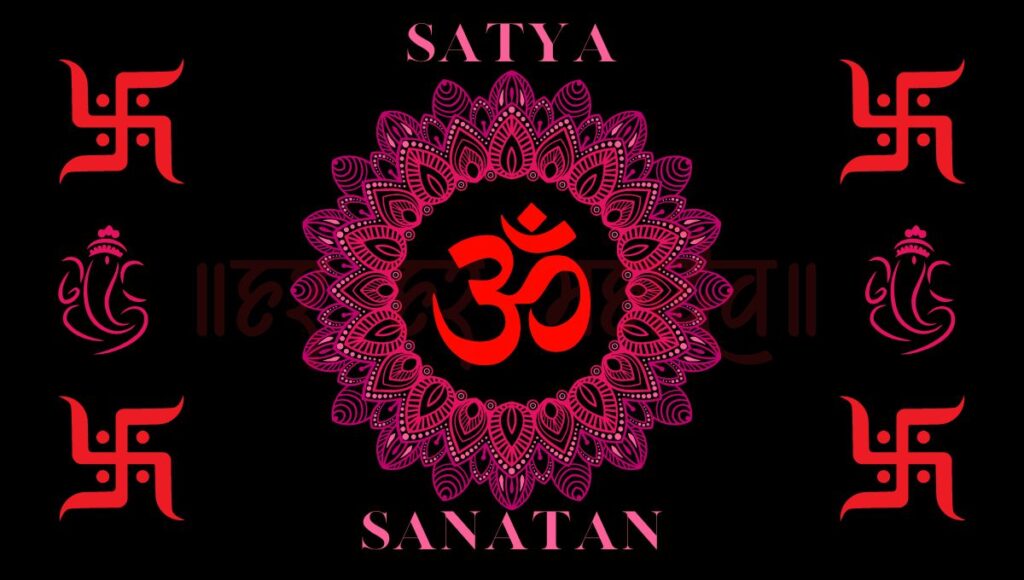Bhavishya Puran 101: A Controversial and Mysterious Text of Hindu Prophecy

Introduction
Hi guys! I’m so glad you’re here. You must be wondering what this blog post is all about.
Well, let me tell you. It’s about one of the most amazing and fascinating texts in Hinduism: the Bhavishya Puran.
Have you ever heard of it?
If not, don’t worry. You’re not alone. Many people are unaware of this ancient and sacred scripture that contains the history of the future.
Yes, you read that right. The history of the future.
Bhavishya Puran is one of the 18 major Puranas in Hinduism. The word “Bhavishya” means “future” and “Puran” means “ancient story”. So, Bhavishya Puran is an ancient story about the future.
Sounds fascinating, right? It’s like a roadmap for humanity that shows us where we came from, where we are, and where we are going.
But wait, there’s more.
Bhavishya Puran is not just any ordinary story. It is a story that contains prophecies and predictions about the past, present, and future of the world. It covers topics such as the advent of Christianity, Islam, Sikhism, British rule, and many other events that have happened or will happen in human history.
Wow!
But before you get too excited, let me warn you. Bhavishya Puran is also a very controversial and mysterious text. It has been challenged and criticized by many modern scholars and historians for its authenticity and veracity. It has also been accused of being influenced by various motives and agendas.
Hmm…
So, what is the truth behind Bhavishya Puran? How did it come into existence? What does it really say? And why does it matter?
These are some of the questions that I will try to answer in this blog post. My aim is to explore the controversy and mystery surrounding Bhavishya Puran and to help you understand its significance and relevance for Hinduism and history.
Are you ready to join me on this journey?
Then let’s begin!
How Did Bhavishya Puran Come Into Existence? 📜

The first question that we need to ask is: How did Bhavishya Puran come into existence?
Who wrote it? When was it written? And where was it written?
These are not easy questions to answer. In fact, they are some of the most debated and disputed questions in the study of Bhavishya Puran.
According to the traditional belief, It was written by Vyasa, the legendary sage who compiled the Vedas, the oldest scriptures of Hinduism. Vyasa is also credited with writing the Mahabharata, the epic that contains the Bhagavad Gita, one of the most revered texts of Hinduism.
Vyasa is said to have written Bhavishya Puran as a part of his mission to classify and preserve the knowledge of the Vedas for future generations. He divided the Vedas into four sections: Rigveda, Samaveda, Yajurveda, and Atharvaveda. He also composed 18 Puranas, which are stories that explain and illustrate the teachings of the Vedas.
Bhavishya Puran is one of these 18 Puranas. It is classified as a Sattva Purana, which means that it focuses on the worship of Vishnu, the supreme god of Hinduism.
Vyasa is believed to have written this Puran in Sanskrit, the ancient language of India. He is also believed to have written it in a place called Naimisha Forest, which is located in present-day Uttar Pradesh, India.
Sounds simple enough, right?
Well, not quite.
The problem is that there is no conclusive evidence to support these claims. There is no historical or archaeological proof that Vyasa existed or wrote Bhavishya Puran. There is also no clear consensus on when this was written. Some scholars date it as early as 300 BCE, while others date it as late as 1800 CE.
That’s a huge gap!
Moreover, there is no single or original version of Bhavishya Puran. There are many different versions and editions exist today. They vary in their content, structure, and style. They also contain many additions, deletions, modifications, and interpolations that were made by various authors and editors over time.
Some of these versions and editions are:
- The Venkateshvara Press edition: This is one of the most popular and widely available editions of Bhavishya Puran. It was published by Venkateshvara Press in Mumbai in 1897 CE. It contains four parts: Pratisarga Parva (the creation of secondary worlds), Ansha Parva (the division of time), Uttar Parva (the future events), and Brahmaparva (the worship of Brahma).
- The Bombay edition: This is another popular and widely available edition of Bhavishya Puran. It was published by the Bombay Sanskrit Series in 1919 CE. It contains three parts: Pratisarga Parva, Ansha Parva, and Uttar Parva. It is similar to the Venkateshvara Press edition, but it has some differences in the text and the order of the chapters.
- The Calcutta edition: This is a rare and obscure edition. It was published by the Asiatic Society of Bengal in Calcutta in 1888 CE. It contains two parts: Pratisarga Parva and Ansha Parva. It is different from the other editions in many ways. It has a different number of chapters, a different arrangement of chapters, and a different style of writing.
- The Nepalese edition: This is another rare and obscure edition. It was discovered in Nepal in 1969 CE by a scholar named Dinesh Chandra Bhattacharya. It contains only one part: Pratisarga Parva. It is also different from the other editions in many ways. It has a different number of chapters, a different arrangement of chapters, and a different style of writing.
These are just some of the examples of the versions and editions that exist today. There are many more that have been found or are yet to be found.
So, as you can see, the history and versions of Bhavishya Puran are very complex and confusing. They raise many questions and doubts about the origin and authorship of Bhavishya Puran.
Who wrote the original Bhavishya Puran? When was it written? Where was it written? Which version or edition is the most authentic and reliable? How did the different versions and editions come into existence? Who made the changes and why?
These are some of the questions that we need to explore further to understand the controversy and mystery surrounding Bhavishya Puran.
If you want to learn more about the history and versions of Bhavishya Puran, you can check out these sources:
What Does Bhavishya Puran Say? 🔮

The next question that we need to ask is: What does it say?
What are the prophecies and predictions that it contains? How accurate and reliable are they? And what are their sources and influences?
These are also not easy questions to answer. In fact, they are some of the most fascinating and controversial questions in the study of this particular Puran.
As we have seen, This Puran is an ancient story about the future. It contains prophecies and predictions about the past, present, and future of the world.
But what kind of prophecies and predictions are they?
Well, they are very diverse and varied. They cover topics such as:
- The creation and destruction of the universe
- The cycles of time and ages
- The genealogies and histories of kings, sages, gods, demons, etc.
- The advent and spread of various religions, sects, cults, etc.
- The rise and fall of various empires, kingdoms, nations, etc.
- The events and personalities of various epochs, eras, periods, etc.
- The signs and symptoms of the end times
- The appearance and activities of various incarnations, messiahs, prophets, etc.
- The secrets and mysteries of various sciences, arts, philosophies, etc.
These are just some of the examples of the prophecies and predictions that Bhavishya Puran contains. There are many more that are too numerous to mention here. [ I will write a dedicated blog specially on the prophecies and predictions that it contains. So stay connected. ]
But how do we know that these prophecies and predictions are true?
Well, that’s where things get tricky.
Some of these prophecies and predictions seem to be accurate and reliable. They seem to match with historical facts or current events. They seem to provide insights or explanations for various phenomena or occurrences.
For example:
- It predicts that a king named Vikramaditya will rule over India for a long time. This seems to match with the historical figure of Vikramaditya who was a famous king of India who ruled from 375 CE to 415 CE.
- It predicts that a religion named Isa-Masiha will emerge from a place called Shaka-dvipa. This seems to match with Christianity which emerged from Syria which was part of Scythia or Shaka-dvipa in ancient times.
- It predicts that a prophet named Muhammad will arise from a place called Arabia. This seems to match with Islam which emerged from Arabia and was founded by Muhammad.
These are just some of the examples of prophecies and predictions that seem to be accurate and reliable. There are many more that are too impressive to ignore.
However, not all of these prophecies and predictions are accurate and reliable. Some of them seem to be inaccurate and unreliable. They seem to contradict historical facts or current events. They seem to provide errors or confusion for various phenomena or occurrences.
For example:
- It predicts that a king named Pramiti will rule over India for 100 years. This seems to contradict the historical fact that there was no such king named Pramiti who ruled over India for 100 years.
- It predicts that a religion named Mahamada will emerge from a place called Malechha-dvipa. This seems to confuse Islam with another religion called Manichaeism which emerged from Persia and was part of Malechha-dvipa in ancient times.
- It predicts that a prophet named Kalki will appear at the end of the Kali Yuga and destroy all evil. This seems to contradict the current event that the Kali Yuga is still ongoing and there is no sign of Kalki’s appearance.
These are just some of the examples of prophecies and predictions that seem to be inaccurate and unreliable. There are many more that are too dubious to accept.
So, as you can see, the prophecies and predictions of Bhavishya Puran are very diverse and varied. They also raise many questions and doubts about their accuracy and reliability.
How can we explain the discrepancies and inconsistencies in the prophecies and predictions? How can we verify or falsify the prophecies and predictions? How can we distinguish between genuine and spurious prophecies and predictions?
These are some of the questions that we need to explore further to understand the controversy and mystery surrounding Bhavishya Puran.
If you want to learn more about the prophecies and predictions of Bhavishya Puran, you can check out this source:
Why Is Bhavishya Puran Controversial and Mysterious? 🕵️♂️

The final question that we need to ask is: Why is This Puran so controversial and mysterious?
What are the criticisms and challenges that it faces? What are the questions and doubts that it raises? And what are the motives and agendas behind it?
These are also not easy questions to answer. In fact, they are some of the most complex and sensitive questions in the study of Bhavishya Puran.
As we have seen, Bhavishya Puran is an ancient story about the future. It contains prophecies and predictions about the past, present, and future of the world.
But not everyone agrees with or accepts Bhavishya Puran. It has been faced with many criticisms and challenges from various sources.
Some of these sources are:
- Modern scholars and historians: They question the authenticity and veracity of it. They point out the inconsistencies and contradictions in its history, versions, editions, content, structure, style, etc. They also point out the errors and confusion in its prophecies and predictions. They argue that it is not a reliable or credible source of information or knowledge.
- Other religions and sects: They challenge the validity and authority of the Puran. They dispute its claims and interpretations about their origins, beliefs, practices, etc. They also dispute its claims and interpretations about their prophets, messiahs, leaders, etc. They argue that it is not a respectful or tolerant text of Hinduism.
- Rationalists and skeptics: They doubt the possibility and probability of the Puran. They reject its assumptions and premises about the nature of reality, time, causality, etc. They also reject its methods and techniques of prophecy, prediction, revelation, etc. They argue that it is not a logical or scientific text of Hinduism.
These are just some of the examples of the sources that criticize or challenge Bhavishya Puran. There are many more that have different perspectives or agendas.
So, as you can see, this Puran is a controversial text. It has been faced with many criticisms or challenges from various sources.
But why is it so?
What makes Bhavishya Puran so controversial?
Well, there are many possible reasons for this. Some of them are:
- The nature of prophecy: Prophecy is a phenomenon that involves foretelling or forecasting future events or outcomes based on divine inspiration or revelation. Prophecy is often considered a sign or proof of divine intervention or guidance. Prophecy is also often considered as a source or basis of faith or belief.
However, prophecy is also a phenomenon that is difficult to prove or disprove. Prophecy is also a phenomenon that is subject to interpretation or manipulation. Prophecy is also a phenomenon that can cause conflict or controversy among different groups or individuals who have different views or interests. - The nature of Bhavishya Puran: It is a text that contains prophecies and predictions about the past, present, and future of the world. It is also a text that exists in many different versions and editions that vary in their content, structure, and style. It is also a text that contains many additions, deletions, modifications, and interpolations that were made by various authors and editors over time.These factors make this Puran a text that is difficult to authenticate or verify. These factors also make Bhavishya Puran a text that is subject to interpretation or manipulation. These factors also make Bhavishya Puran a text that can cause conflict or controversy among different groups or individuals who have different views or interests.
- The nature of human beings: Human beings are creatures that have curiosity and imagination. Human beings are also creatures that have emotions and opinions. Human beings are also creatures that have motives and agendas. These factors make human beings interested in Bhavishya Puran and its prophecies and predictions. These factors also make human beings biased or prejudiced towards Bhavishya Puran and its prophecies and predictions. These factors also make human beings use or abuse Bhavishya Puran and its prophecies and predictions for their own purposes or benefits.
These are just some of the possible reasons for the controversy surrounding Bhavishya Puran. There may be many more that are beyond our scope or understanding.
So, as you can see, Bhavishya Puran is a mysterious text. It has raised many questions and doubts about its origin, authorship, content, structure, style, etc. It has also raised many questions and doubts about its prophecies, predictions, claims, interpretations, etc. It has also raised many questions and doubts about its motives, agendas, influences, impacts, etc.
These are some of the questions and doubts that we need to explore further to understand the controversy and mystery surrounding Bhavishya Puran.
What is my point of view?🙋♂️

Well, I personally believe that Bhavishya Puran is trustable and should be taken as a guide for humanity’s decisions and actions.
So, here is my explanation:
Bhavishya Puran is trustable because it is a record of the prophecies and predictions that were made by Vyasa or other sages who had access to the higher dimensions of reality. These higher dimensions are beyond the three dimensions of space and one dimension of time that we perceive in our ordinary reality. These higher dimensions allow the possibility of parallel universes and timelines that coexist with our universe and timeline.
According to some theories and models, such as The string theory or The multiverse theory, there are multiple dimensions of reality that are hidden or curled up in our universe. These dimensions can be accessed by certain entities or phenomena that have the ability or power to transcend or manipulate the lower dimensions. These entities or phenomena can be called gods, sages, prophets, messiahs, etc.
These entities or phenomena can see or travel to the higher dimensions and observe or influence the parallel universes and timelines that exist there. They can also communicate or reveal their observations or influences to the lower dimensions through various means, such as scriptures, visions, dreams, etc.
Bhavishya Puran is one of these means. It is a scripture that contains the observations or influences of Vyasa or other sages who had access to the higher dimensions. They saw or traveled to the parallel universes and timelines that contained the past, present, and future events of our universe and timeline. They also communicated or revealed their observations or influences to the lower dimensions through Bhavishya Puran.
Therefore, Bhavishya Puran is trustable because it is based on the higher dimensions of reality that are more comprehensive and accurate than the lower dimensions of reality that we perceive in our ordinary reality.
However, this does not mean that Bhavishya Puran is infallible or immutable. It is still subject to interpretation or manipulation by various factors, such as human error, human bias, human motive, human agenda, etc. It is also subject to variation or modification by various factors, such as historical change, cultural change, linguistic change, etc.
Therefore, Bhavishya Puran should be read with caution and discernment. It should not be taken literally or dogmatically. It should be taken metaphorically or symbolically. It should be taken as a guide or inspiration, not as a command or obligation.
If you want to learn more about the concept of parallel universes, dimensions, and timelines concept, you can check out these sources:
- [Parallel Universes] by Max Tegmark
- [The Hidden Reality] by Brian Greene
- [The Fabric of Reality] by David Deutsch
Conclusion

So, this brings us to the end of this blog post.
I hope you enjoyed reading it as much as I enjoyed writing it
In this blog post, I tried to answer three questions:
- How did Bhavishya Puran come into existence?
- What does Bhavishya Puran say?
- Why is Bhavishya Puran controversial and mysterious?
I hope I was able to provide you with some information and insights on these questions.
But I also hope I was able to spark your curiosity and imagination on these questions.
Because these questions are not final or definitive. They are open-ended and ongoing. They invite further exploration and investigation. They invite further discussion and debate. They invite further learning and discovery.
So, I invite you to share your thoughts and opinions on these questions.
What do you think about Bhavishya Puran?
Do you believe in its prophecies and predictions?
Do you agree with its claims and interpretations?
Do you understand its motives and agendas?
Do you appreciate its significance and relevance?
Or do you have any other questions or doubts about it?
Please feel free to leave your comments below.
I would love to hear from you
And if you want to learn more about Bhavishya Puran or any other topic related to Hinduism or history, please feel free to browse through my blog.
You will find many more interesting and informative articles on various topics.
You will also find some suggestions for further reading or research on various topics.
You will also find some links to other resources or websites that can help you learn more about various topics.
So, please check out my blog and let me know what you think
Thank you for reading this blog post. I hope you found it useful and enjoyable. I hope to see you again soon
Namaste!!
FAQs
What is the difference between Bhavishya Puran and Bhavishyottara Purana?
Bhavishya Puran and Bhavishyottara Purana are two different texts that are often confused or conflated with each other. Bhavishya Puran is one of the 18 major Puranas in Hinduism, while Bhavishyottara Purana is a supplement or appendix to Bhavishya Puran. Bhavishya Puran contains prophecies and predictions about the past, present, and future of the world, while Bhavishyottara Purana contains rituals and rules for various festivals and occasions.
Bhavishya Puran is classified as a Sattva Purana, while Bhavishyottara Purana is classified as a Rajas Purana. Bhavishya Puran focuses on the worship of Vishnu, while Bhavishyottara Purana focuses on the worship of Shiva.
How can I read or access Bhavishya Puran?
There are several ways to read or access Bhavishya Puran. You can find printed copies of Bhavishya Puran in various languages and editions in bookstores or libraries. You can also find digital copies of Bhavishya Puran in various formats and platforms online. For example, you can read the English translation of the Venkateshvara Press edition of Bhavishya Puran.
You can also read the Sanskrit text of the Bombay edition of Bhavishya Puran. You can also listen to the Hindi audio version of Bhavishya Puran.
Is Bhavishya Puran authentic or reliable?
This is a difficult question to answer, as there is no clear or definitive answer to it. Different people may have different opinions or perspectives on the authenticity or reliability of Bhavishya Puran. Some may believe that Bhavishya Puran is authentic and reliable, as it is a part of the sacred scriptures of Hinduism and contains divine revelations and insights.
Some may doubt that Bhavishya Puran is authentic and reliable, as it has many inconsistencies and contradictions in its history, versions, editions, content, structure, style, etc. Some may also doubt that Bhavishya Puran is authentic and reliable, as it has many errors and confusions in its prophecies and predictions.
Ultimately, it depends on your own judgment and criteria to decide whether Bhavishya Puran is authentic or reliable.
What is the purpose or significance of Bhavishya Puran?
This is also a difficult question to answer, as there may be multiple or diverse purposes or significances of Bhavishya Puran. Some may say that the purpose or significance of Bhavishya Puran is to provide information or knowledge about the past, present, and future of the world.
Some may say that the purpose or significance of Bhavishya Puran is to inspire faith or belief in the divine plan or will of God. Some may say that the purpose or significance of Bhavishya Puran is to provoke curiosity or imagination about the possibilities or probabilities of the future. Some may say that the purpose or significance of Bhavishya Puran is to create conflict or controversy among different groups or individuals who have different views or interests.
Again, it depends on your own interpretation and evaluation to decide what is the purpose or significance of Bhavishya Puran.
How can I learn more about Bhavishya Puran?
There are many ways to learn more about Bhavishya Puran. You can read more books or articles on Bhavishya Puran by various authors or scholars who have studied or researched on it. You can also watch more videos or podcasts on Bhavishya Puran by various speakers or experts who have discussed or debated on it.
You can also join more groups or forums on Bhavishya Puran by various enthusiasts or followers who have shared or exchanged their opinions or experiences on it. You can also visit more places or sites on Bhavishya Puran by various institutions or organizations who have preserved or promoted it.
You can also ask more questions or doubts on Bhavishya Puran by me I will try my best to answer them for you
